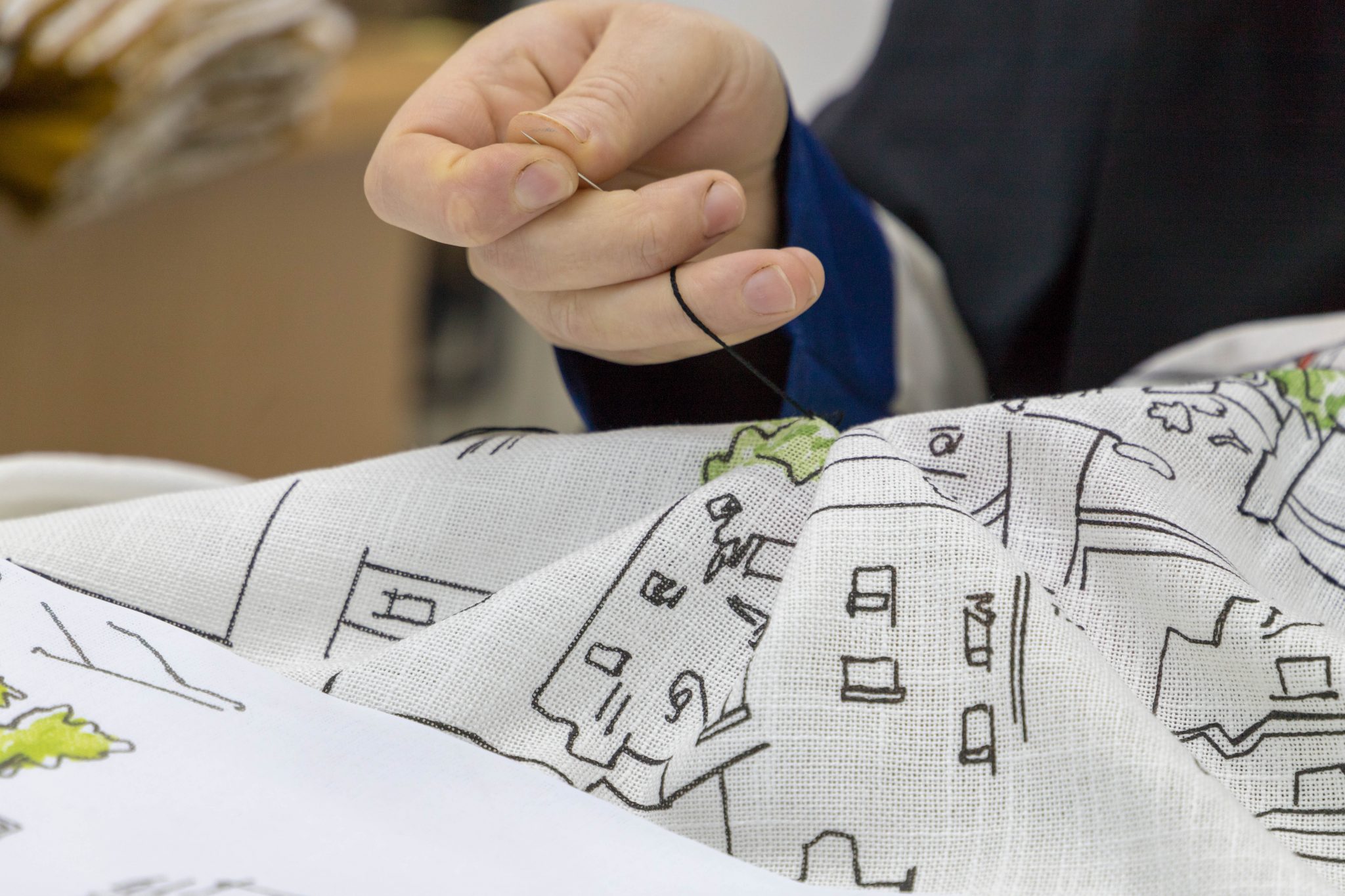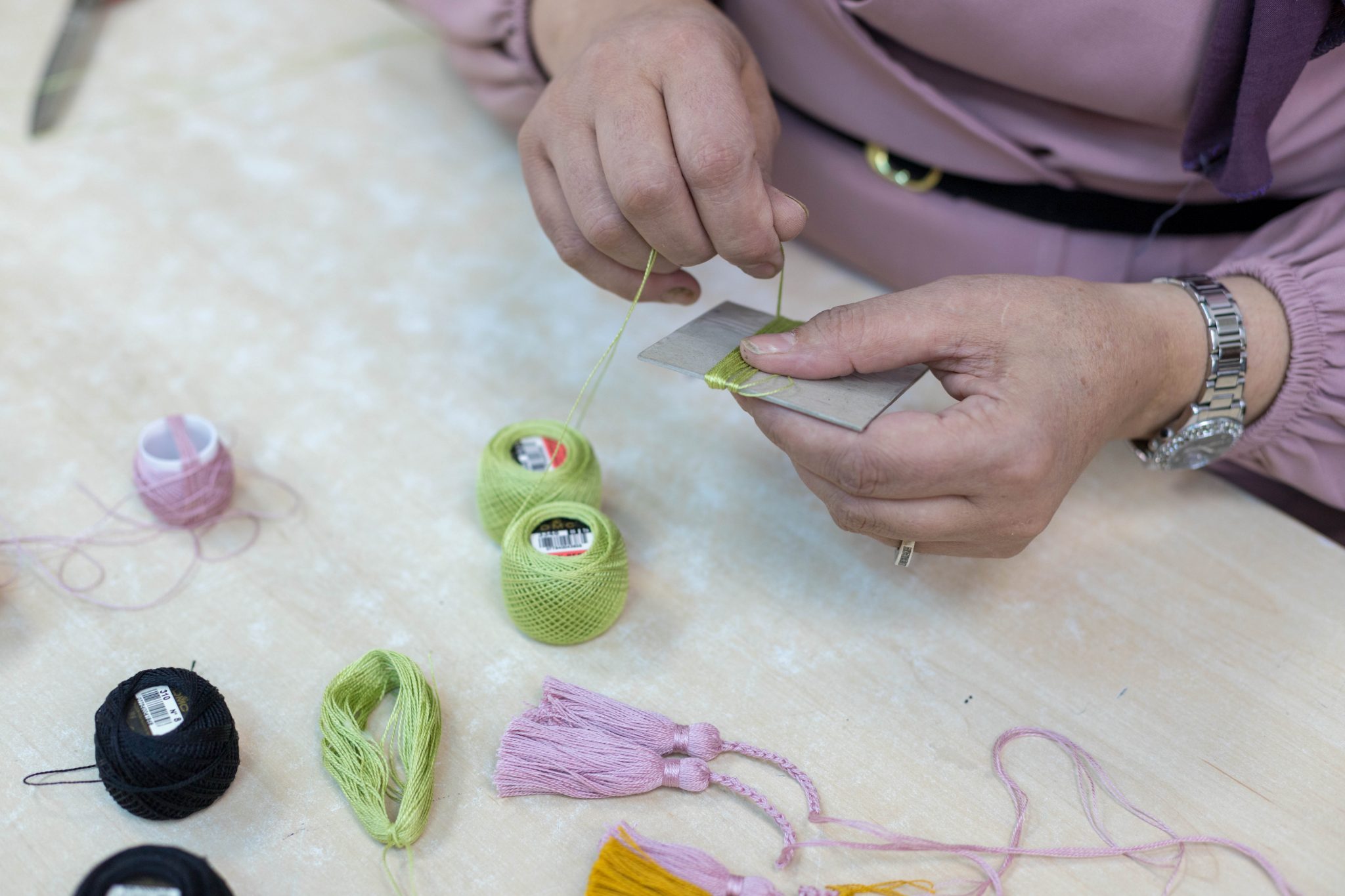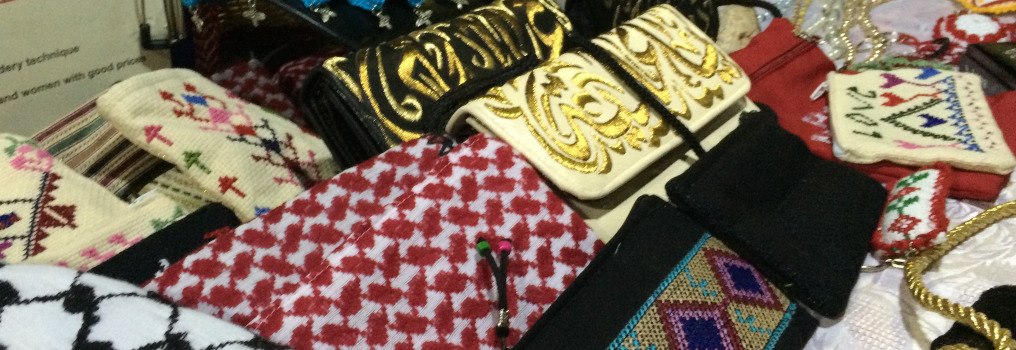The decade-long protracted war in Syria has left nearly six million Syrians seeking refuge in three neighboring countries: Lebanon, Turkey, and Jordan. Early into the conflict, many refugees had already depleted their savings and were left dependent on humanitarian aid to provide basic services. Host communities attempted to absorb the shocks from the large influx of refugees, but with weak social protection systems, especially in Lebanon and Jordan, that could not ensure a family had access to basic income to reduce poverty and its risks, tensions quickly grew over the competition of scarce resources and limited jobs.
As a humanitarian practitioner working with Syrian refugees across Jordan, Lebanon, and Iraq, I witnessed these challenges among refugees and host communities. As individuals struggled with profound economic and social distress resulting from years of forced displacement, women stepped up to drive entrepreneurial solutions. Through funding and support by humanitarian and development organizations, women found empowerment in the traditional Arab craft of tatreez, or embroidery. This handcraft, historically rooted across the Arab region and preserved by Palestinian artisans, has enabled women to come together to use art as a form of economic empowerment while also finding space to engage in an activity that helps build resilience from the trauma and the pain of displacement.
Tatreez as a tool of economic empowerment
On any given day, the crafts rooms at community centers that I visited across Jordan were ringing with a disjointed chorus from chattering women; the sewing matching composing a melodic tune to accompany the cheerful voices of Syrian refugees and Jordanian—including Jordanian Palestinian—women working together to craft the traditional Palestinian and Syrian designs of tatreez.
Only a few of the women have prior experience with tatreez—almost all were trained by women leading the efforts in their communities to use the art as a form of economic empowerment. Traditionally a skilled craft for personal adornment rather than only a source of income, the patterns and designs symbolized narratives from the region where women proudly wore their story. That same pride now symbolizes the economic empowerment and independence for women as they use art to support their families financially while also displaying their own narratives of resilience in the materials sold at local and international markets.

(Photo from the Jordan River Foundation)
In the bustle of the crafts center, Syrian women would come to the centers after hearing about the possible employment opportunities. At the start of the war, refugees had minimal alternatives to decrease their growing aid dependency. As the war continued, Syrian refugees informally worked for lower wages across neighboring host countries, leaving them at risk of exploitation and forced returns. Witnessing the negative results, international and local groups advocated to formalize working conditions for refugees in host countries, and by 2018, the Global Compact on Refugees (GCR) was affirmed by the United Nations General Assembly, paving the way for creating more self-reliance opportunities for refugees. In the years prior to the passing of the GCR, consultations between host governments, UN agencies, and non-governmental organizations led to attempts to formalize some work opportunities for Syrian refugees, creating a small opening for a limited number of women to participate in artisanal crafts as a formal employment opportunity, but the GCR has since helped establish a framework to support local initiatives.
Creating formal employment opportunities for women has contributed to a shift in the dynamics of Syrian households. Women could have a greater economic role to develop skills and generate income for their families, and tatreez became one of these initiatives. Even prior to the pandemic shifting work from an office to a home setting, tatreez could be done from home, providing women greater flexibility with work hours, childcare, and transportation. As tensions were growing in host countries and Syrian refugee men were struggling to find formal employment, the ability for women to work created an alternative source of income.
“Women [at the crafts center] share with us their excitement about the work, telling us that they are proud to share with their husbands and children that they are earning income for the family and producing for the community,” Mohammad, a program manager for the local nonprofit organization Jordan River Foundation (JRF), shared. He described how the women support other women in their community by helping recruit them to train and join the work force. Fatin, formerly a teacher in Syria before seeking refuge in Jordan, described how working at a crafts center helped empower her to start saving money to send her children to college.
Yet despite the progress in supporting women gain work permits to enjoy formal employment with flexible schedules, the opportunities themselves remain limited. JRF, for example, partnered with the Scandinavian home goods store, IKEA, to create more opportunities to provide contractual work for both Jordanian and Syrian women to produce specialized handcrafts to sell at their stores; they, however, remain limited to being able to support less than a thousand women. Nonetheless, this partnership has enabled women to access a larger market resulting in increasing the workload to hire additional women. Moreover, this remains one of a few projects in Jordan that provide women with artisan craft training, which is where they learn the basic stitches and design, and then offer them contractual employment rather than cash-for-work—a process where women are contracted to work based on the number of items requested by a client. The model used by JRF supports women to access stable employment through a corporate partnership that encourages hiring refugees.
Building resilience and community
As women gather—daily, weekly, or monthly—with flexible work requirements to meet their needs, they are able to find a healing power in their art. The repetitive movements, the healthy competition, and improvement in their skillset were all factors that helped women establish a positive coping mechanism to support their mental health, which has been crucial to those fleeing the well–documented violence in Syria. The war has left no Syrian untouched by the violence and its effects, with many experiencing mental distress and post-traumatic stress disorder.

(Photo from the Jordan River Foundation)
When I first met Lina, a Syrian refugee employed through JRF, she described to me how for the past three years she has been traveling six hours a day from Zaatari refugee camp to Amman to work at the center because she felt the experience has been an important part of her life as a refugee. “Everyone kept telling me I would be exhausted from work, but I insisted I wanted to keep going…any job is exhausting, but I wanted to strengthen my confidence. I wanted to find stability and let my mental health become stronger. I was also able to leave the house to meet people.” For Lina, the community at the center has been critical to helping her learn how to adapt and live in a situation of protracted displacement. “A lot in my life is getting better. It is worth six hours [of transportation] every day,” she added.
The prevalence of severe trauma and post-traumatic stress disorder from the brutality of the war has left Syrians seared with psychological scars and minimal support to help alleviate the mental and emotional toll. With an insufficient number of mental health care professionals to meet the needs of Syrian refugees, individuals and organizations have identified other methods to support refugees build their resilience and develop healthy coping habits. One such activity, often referred to as “art therapy,” aims at creating routine and increasing capacity using different forms of art as a means of learning to manage their own mental wellbeing. In many parts of the world, art therapy plays a crucial role in resilience building through self-expression. Fatin shared, “it is a great feeling to be learning a skillset. It is a beautiful feeling. I like that I am able to see changes and improvements in myself and my skills.”
And it is not just in the repetitive motions and the image drawn by the needle and thread that helps build resilience through self-expression and economic empowerment—it is also in being together with others who are motivating each other to improve their work. Jordanian women often describe it as also providing a chance to interact with refugees, to hear their stories, and support them in building a community in their country of refuge. Some Jordanian women, like Fatima, who works at a crafts center with Syrians, described how being around other skilled artisans has helped her develop a healthy sense of competition in her community that motivates her to improve her craft.
Every Syrian woman I’ve met carries a tremendous weight of loss and separation from family and destroyed homes. For many, the ability to even create space to heal from the trauma is difficult in the face of the chronic stress of surviving with uncertainty and difficulty controlling their livelihoods in their host country. Though tatreez itself may not address the trauma or distress, it provides a sense of relief from daily frustrations, along with relief from the income that may alleviate some of the financial burdens and challenges. The routine movements of the needle and thread in the fabric to produce a pattern helps reduce tension and decrease the effects of the trauma. But it does not address all the factors that contribute to the chronic stress in the life of refugees, including the feeling of being stuck in limbo not belonging to their host country and unsafe to return to their home country. While tatreez can build resilience and support in providing temporary relief to stress, it does not fully address or prevent all other daily challenges Syrian refugees face. Other efforts such as providing specialized mental health services for trauma and ensuring basic needs are met in terms of health care, children’s education, and nutritional needs are also required.
Ensuring continuity

(Photo from the Jordan River Foundation)
These artisan projects provide great benefits to women but remain scant. Donors are often hesitant to fund longer-term recovery programs in humanitarian contexts, but the protracted nature of Syria’s conflict has pushed donors, organizations, and host governments to rethink an approach that has left refugees relying on aid. The ability to work in centers and produce handmade items supports women’s economic empowerment while building their social resilience and strengthening their mental health.
To ensure the continuity of these programs, it is important for donors to find ways to support organizations with seed money to kickstart these programs. Businesses partnerships, similar to JRF and IKEA, are essential to sustain these programs beyond donor funding. Yet one of the challenges a program manager at JRF described to me is that the global business model is focused on mass production and low, unfair wages, resulting in demands that cannot be met in the region and thus losing opportunities to develop partnerships. Refugees are a vulnerable group and organizations that are working to prevent their exploitation from businesses in the garment industry find themselves unable to scale models that support increasing employment opportunities in the crafts industry.
